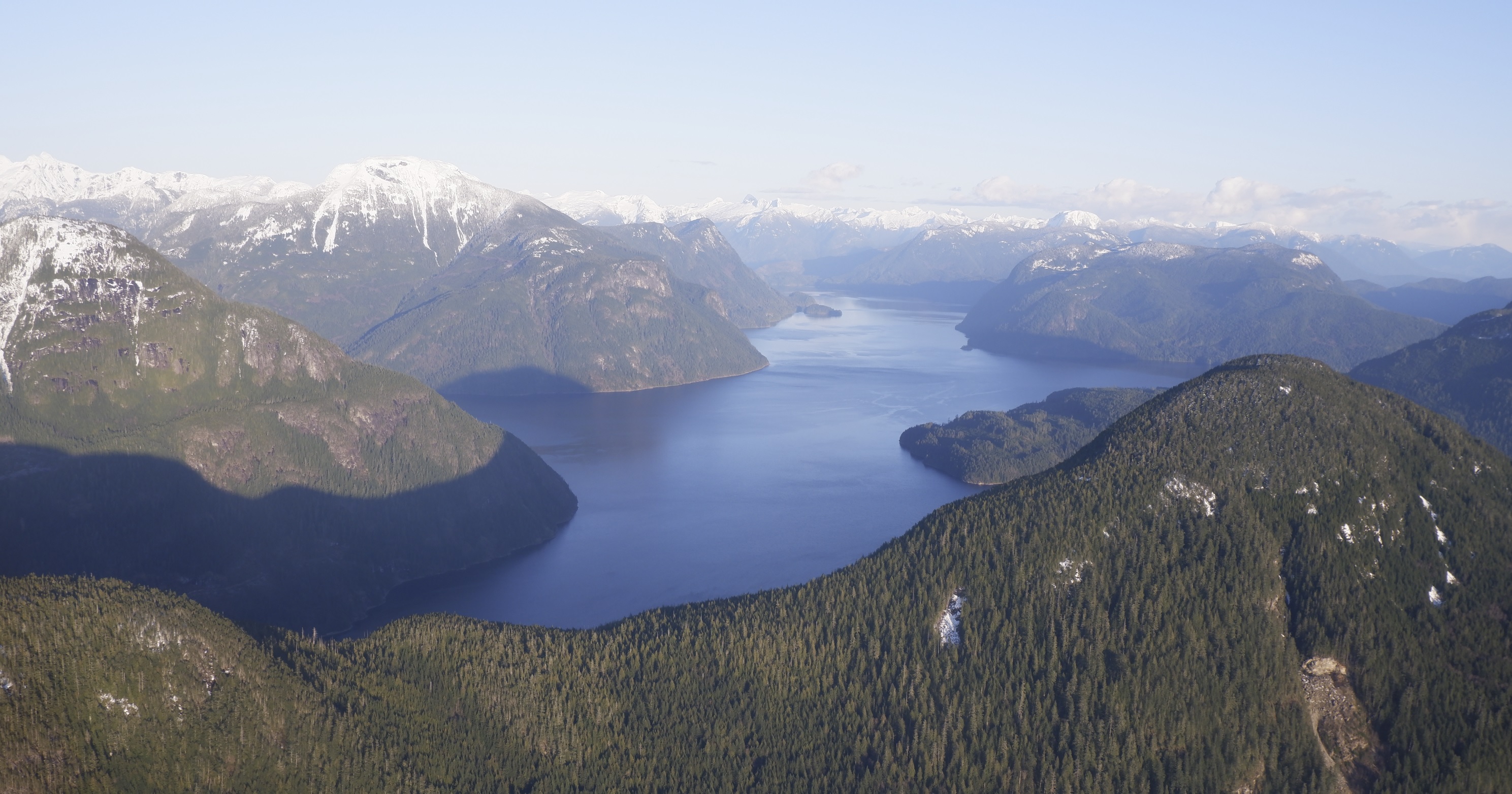Winter Arctic Outflow Winds Cause Upper Ocean Cooling and Reoxygenation in a Temperate Canadian Fjord
 Thursday, October 12, 2023 at 2:06PM
Thursday, October 12, 2023 at 2:06PM J. M. Jackson , K. Holmes , J. M. Klymak , L. Bianucci , W. Evans , W. C. Floyd, C. G. Hannah4 , A. Hare , and D. Wan.
https://agupubs.onlinelibrary.wiley.com/doi/pdf/10.1029/2023GL104549
Arctic outflow winds bring cold air from the continent to the coastline through mountain passes. Using observational data and a 2-D model, we show that a February 2019 outflow event caused the upper 100 m in Bute Inlet, British Columbia (within the traditional territory of the Homalco Nation) to cool up to 1.9°C and gain up to 4.1 mLL−1 of oxygen. The cold, oxygenated water persisted for almost 1 year within the 1,023–1,023.5 kgm−3 isopycnal range (∼50–150 m). Atmospheric (from 1929 to 2022) and oceanographic (from 1951 to 2022) data showed a statistically significant relationship between continental air temperature at Tatlayoko Lake and temperature and oxygen in Bute Inlet. This local mechanism that counters some effects of climate change could create a biological refugium as surrounding waters warm and lose oxygen at a faster rate. The number of outflow events decreased from 1951 to 2018, and increased since.

Reader Comments